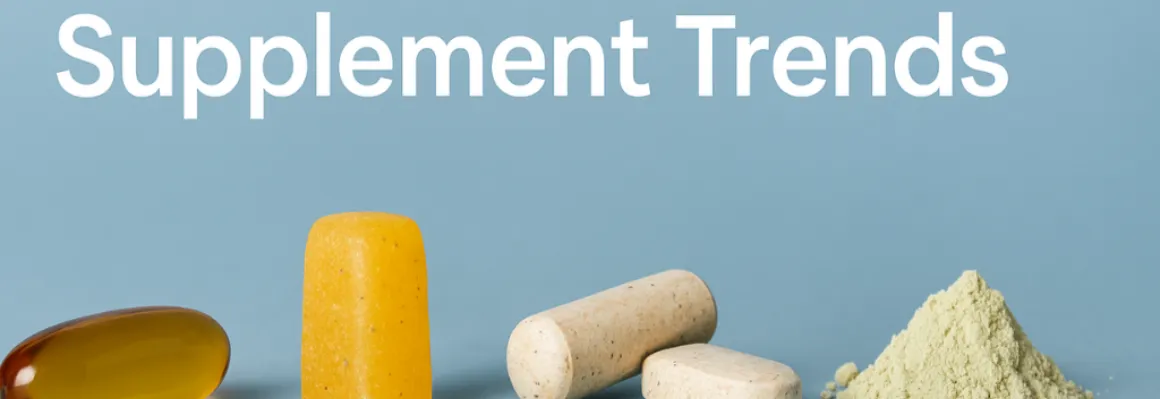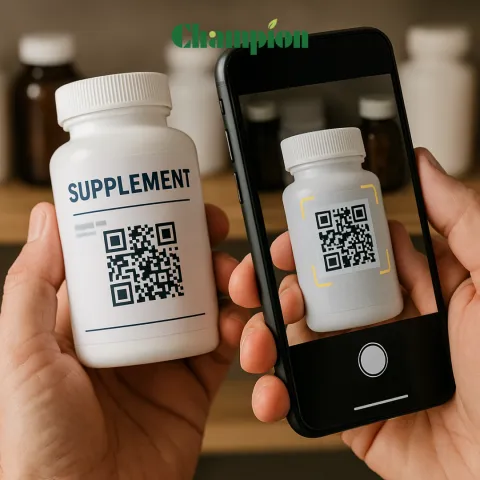Blog
22.Oct.2025
Post-Pandemic Consumer Health Priorities: Data & Implications

Introduction
The COVID-19 pandemic catalyzed profound shifts in global consumer health behavior. As we move further into 2025, the supplement market is reshaping itself around new consumer priorities: proactive prevention, personalized nutrition, and multi-functional wellness solutions. What are the dominant post-pandemic supplement trends—and how should brands adapt? This article reviews the data, uncovers the motivations driving purchases, and highlights actionable implications for the future of wellness.The Data: How the Pandemic Changed Supplement Behavior
Increased Supplement Adoption & Routine Formation
- 58% of consumers say their desire to “take charge of their health” has increased since the pandemic.
- Daily supplement use jumped to 59% (from 41% pre-pandemic), and taking supplements multiple times a day is also up.
- More than 75% of global consumers report taking supplements occasionally, with Millennials as the most consistent users.
Higher Knowledge & Savvier Shoppers
- 35% of supplement buyers now consider themselves well-informed or experts (up from 32% in 2020); the number seeking to learn more rose from 33% to 47%.
- Consumers are more likely to “follow instructions and establish routines,” as daily supplement habits have been solidified post-pandemic.
Multi-Channel Shopping Habits
- Supplement shoppers are no longer tied to one retail channel—the majority buy across mass retailers, DTC e-commerce, specialty stores, and Amazon.
- Shopping at large mass retailers (FDMC—food, drug, mass merchandisers) grew from 38% in 2020 to 48% in 2024, with “multi-channel” shoppers representing 58% of the total supplement population and nearly half the market’s buying power.
Post-Pandemic Health Priorities: What Shoppers Want in 2025
Immune Health: From Seasonal to Lifestyle Priority
- Immune health is no longer reactive but woven into daily prevention and holistic wellness. Consumers now want year-round support for:
- Energy, resilience, and daily vitality.
- Multi-functional immunity—paired with beauty, cognitive, or stress benefits.
- Leading ingredients: vitamin C, D, zinc, elderberry, echinacea, mushrooms (reishi, maitake), adaptogens, marine polysaccharides, and postbiotics.
Gut Health: The Biotics Boom
- Gut health continues as a supplement mega-trend—nearly 70% of shoppers see the gut as foundational for total wellness, with over 64% linking it to emotional health.
- Strong demand for: prebiotics, probiotics, postbiotics, and synbiotics that support the gut-brain-immune axis.
- Innovation is now focused on restoring gut flora, digestive stress relief, and supporting mental wellbeing through the microbiome.
Personalized Nutrition & Functional Customization
- Personalization is a top growth sector, as technology (DNA testing, AI, health apps) empowers consumers to create custom regimens.
- Over half of global consumers are attracted to the idea of personalized nutrition solutions; products that combine precision health tests with tailored supplement subscriptions are surging.
- Brands offering assessment-driven bundles, better stacking, and targeted benefit claims have a competitive edge.
Stress, Mood & Cognitive Wellness
- Stress and sleep supplements are among the fastest-growing categories, with consumers seeking adaptogens, magnesium, GABA, L-theanine, and natural sleep aids.
- Mood, clarity, and focus are high priorities, driven by burnout, hybrid work, and a broader focus on mental wellbeing.
Women’s Health, Beauty, and Longevity
- A post-pandemic boom in women’s specialty and beauty-from-within supplements—collagen, biotin, hyaluronic acid, ceramides, and targeted hormone-balancing blends—has redefined the category.
- Longevity, inflammation, and anti-aging (resveratrol, NMN, antioxidants, peptides) have become mainstream supplement priorities as prevention culture expands.
Sustainability and Clean Label
- Post-pandemic shoppers are more aware of sustainability, environmental impact, and ethics—75% are willing to pay a premium for plant-based, organic, or transparent/traceable supplements.
- Clean label remains non-negotiable for premium and Gen Z buyers; brands are now investing in QR-coded ingredient traceability and eco-friendly formats.
Global Supplement Market Data
| Year | Global Market Size (USD) | CAGR (2024–2033) | Key Drivers |
| 2024 | $192.65 billion | 9% | Immune, gut, mental, personalized |
| 2025 | $214 billion (projected) | Prevention, sustainability | |
| 2033 | $414.52 billion | AI/digital, multi-functional, clean label |
Supplement Trends to Watch in 2025–2026
1. Effervescent, Gummy, and Stick Pack Formats
- Taste, convenience, and on-the-go usability are leading to dominance of non-pill formats—gummies, fast-melt tablets, effervescents, and stick packs.
- Brands are leveraging these preferred formats for every core benefit—immunity, stress, beauty, and energy.
2. Bioavailability & Science-Backed Formulation
- Consumers expect evidence for absorption and efficacy—nutrition technology (chelation, liposomal delivery, time-release) is a core differentiator.
- Multi-functional blends, combining immune, beauty, mood, and cognitive support, are in demand.
3. Multi-Channel and Omnichannel Sales
- There’s a return to in-person purchasing post-pandemic, but the majority of shoppers are “channel-fluid”—moving between retail, DTC, subscription, and social commerce.
4. Digital Engagement and Education
- Buyers are more knowledgeable and research-driven; the brands winning in 2025 provide expert-backed education, robust content, and transparent product testing data.
- Influencer and user-generated content continue to dramatically impact purchasing decisions.
5. Diversity and Inclusion in Formulation
- Ethnic, age, gender, and condition-specific products are surging—women’s health, senior nutrition, and pre/post-natal supplements are key categories.
Practical Implications for Supplement Brands
- Personalization is now table stakes: Invest in technology, ingredient pipelines, and flexible manufacturing for precision health solutions.
- Diversity equals growth: Showcase cross-cultural, gender-inclusive, and life-stage-specific products.
- Science + Transparency: Use clinical research, third-party testing, and visible traceability to win trust.
- Flexible, convenient formats: Offer supplements in formats that fit busy, proactive lifestyles—beyond pills and capsules.
- Channel mastery: Think omnichannel—retain flexibility in marketing, launch strategy, and consumer outreach.
Frequently Asked Questions
Q: What’s the #1 post-pandemic supplement trend?A: Immune health—now a year-round, holistic wellness priority—followed closely by gut health, stress/mood support, and personalized supplementation.
Q: Are shoppers still buying more supplements, or has behavior reverted?
A: Increased adoption persists. Daily supplement use and knowledge have both surged and show no signs of falling back to pre-pandemic levels.
Q: How are consumers choosing supplements now?
A: Based on research, peer/user reviews, science-backed claims, personalized regimens, convenience, and ethical/clean credentials.
Q: What formats and channels are most popular in 2025?
A: Gummies, stick packs, effervescents (formats), and multi-channel purchasing—mass retailers, online direct, Amazon, and specialty stores.
Conclusion
The post-pandemic supplement landscape is more sophisticated, proactive, and personalized than ever. Wellness shoppers in 2025 demand immunity, gut, and mood support as daily essentials—preferably delivered in convenient, clean-label formats. Brands that adapt to these shifts—offering transparency, digital engagement, and diverse, evidence-backed products—are set to lead the next era of global health.Ready to ride the wave?
Invest in personalization, omnichannel presence, and continuous consumer education to outpace the competition in the new supplement era



















